A common cause of snoring is the tongue sliding back into the back of the throat during sleep. This problem only occurs when sleeping in on the back. Therefore, if you are a tongue-based snorer, you should avoid sleeping on your back. Positional therapy devices such as positional therapy vests or anti-snoring backpacks offer excellent support in this case.
Positional Therapy – Helpful to tongue-based snorers?
Snoring when lying on the back is mostly due to tongue-based snoring. When the muscles of the tongue relax, the back part of the tongue – the base of the tongue – slides backwards into the back of the throat. Gravity is the main culprit. The base of the tongue then narrows or blocks the airways when it slides back. However, the airflow has to pass through these constrictions. This leads to turbulence, which causes the surrounding tissue in the throat to vibrate. This causes the familiar sound of snoring. for example.
According to estimations by the physician, Dr Hartmut Grüger (Clinic for Sleep Medicine, Düsseldorf), the tongue sliding backwards is to blame for the nocturnal snoring in about 30 percent of snorers.
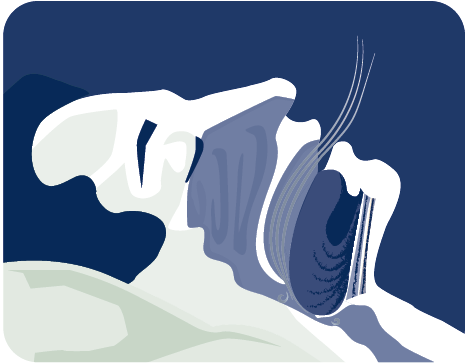
Anti-snoring pillows, positional therapy vests or anti-snoring backpacks: many devices, one approach

Positional therapy can provide support for tongue-based snorers. It includes all products that prevent the snorer from sleeping on their back. When sleeping on the back, gravity pulls the base of the tongue backwards, towards the throat, but this does not happen when the snorer lies on the side or stomach. Positional therapy products include anti-snoring pillows, positional therapy vests or anti-snoring bandages. They are designed to take over the role of your partner, where your partner would otherwise push you to turn over on to your side, to stop you snoring. The only difference is that neither you nor your sleeping partner will wake up with these professional products. All these products are based on the “Princess and the Pea” principle. In other words, you should sleep as uncomfortably as possible when lying on the pea (in this case: on your back).
Important: Positional therapy only helps with tongue-based snoring, i.e. if you only snore when you are lying on your back. If you also snore when lying on your side, then positional therapy is not suitable for you. If you want to find out more about which product will help you, take our anti-snoring test.
Some websites have tips on how to do create positional therapy aids for yourself. For example, they say you can sew a tennis ball onto the back of your pyjamas. Not only does this sound rather uncomfortable, but it is! Especially for people with back problems, this method is not advisable. Moreover, there is a risk that you can still sleep comfortably on your back despite the sewn-in tennis ball. This is because pyjamas are usually cut so loosely that the area with the sewn-in ball easily slides about. The situation is different with professional products. They prevent you from changing your sleeping position very gently, painlessly and without waking you up. A foam wedge or air cushion is sewn into the back of the positional therapy vests or anti-snoring backpacks, which prevents you from rolling onto your back.
The professional products can also be individually adjusted to the shape of your body by various abdominal and chest straps. The straps are padded so that they are comfortable to wear and do not cut into the skin. The material is chosen so that there is no heat build-up.
With the help of the positional therapy products, you can also change your sleeping position in a deliberate way. They then act like positional training. If the bandages, vests or backpacks are worn for several months, the brain becomes accustomed to sleeping on the side. Patients may then no longer need a belt at all because they have become accustomed to sleeping on the side and automatically sleep in this position.
Positional therapy is also an option for alternate therapy in the treatment of pathological snoring (obstructive sleep apnoea). In the case of position-dependent OSAS, i.e. when the breathing interruptions are triggered by the back of the tongue sliding backwards into the back of the throat, causing severe obstruction of the airways when the patient sleeps on their back.

For mild to moderate OSAS, these products have the same effect on the apnoea-hypopnoea index (AHI) as CPAP therapy. The number of breathing interruptions per hour was reduced to less than five.
Although positional therapy belts, vests and backpacks are more widely used – anti-snoring pillows and special side-sleeper pillows can also help prevent snoring.
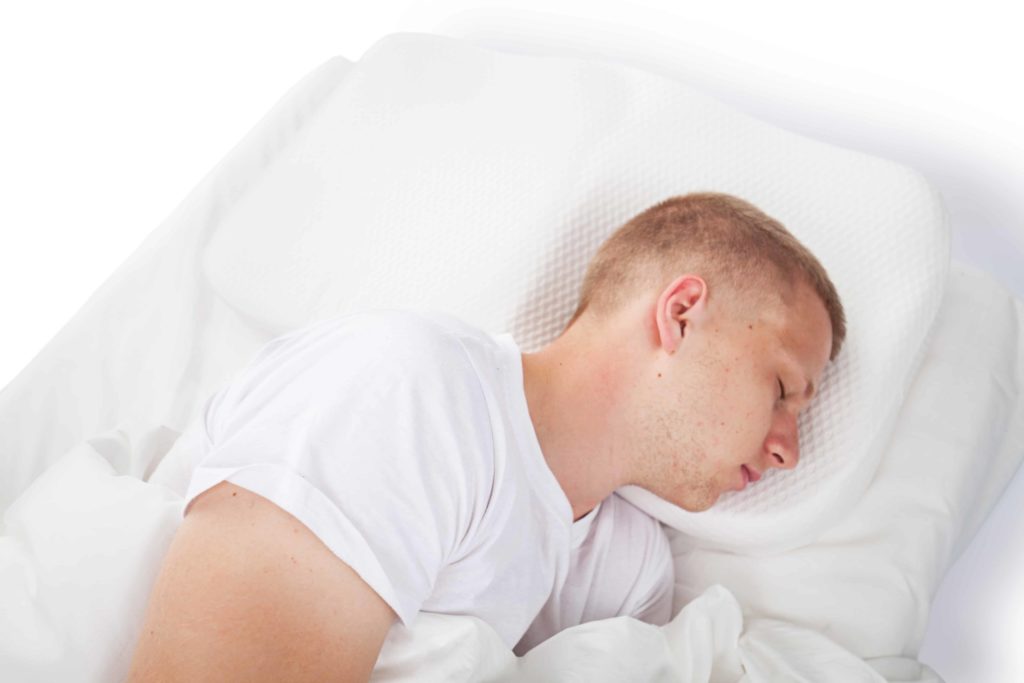
These pillows have a central elevation (“which looks a bit like the Matterhorn”), and prevent the snorer from sleeping comfortably on their back. Instead, the head automatically rolls to one side or the other during sleep, forcing you to sleep on your side. The pillow supports the head, relieves the neck and ensures that you refrain from snoring.
A side sleeper pillow is made from comfortable memory foam and is covered with a pleasant, skin-friendly pillow case.
What You Should Know Before Buying a Mandibular Advancement Device
Advice on what to look for when buying a mandibular advancement device (MAD). Different models and technical approaches explained.
What You Should Know Before Buying a Nasal Dilator
Advice on what to look for when making a purchase. We present you with a variety of different nasal dilators.
Mandibular advancement device comparison
All our mandibular advancement devices compared based on comfort, application, cleaning and much more.

Medical Doctor, Berlin
Jan Wrede works as a medical doctor in Berlin. He studied medicine at FAU University in Erlangen-Nuremberg and Semmelweis University in Budapest. He had already written numerous scientific articles during his studies, especially on the subject of snoring.


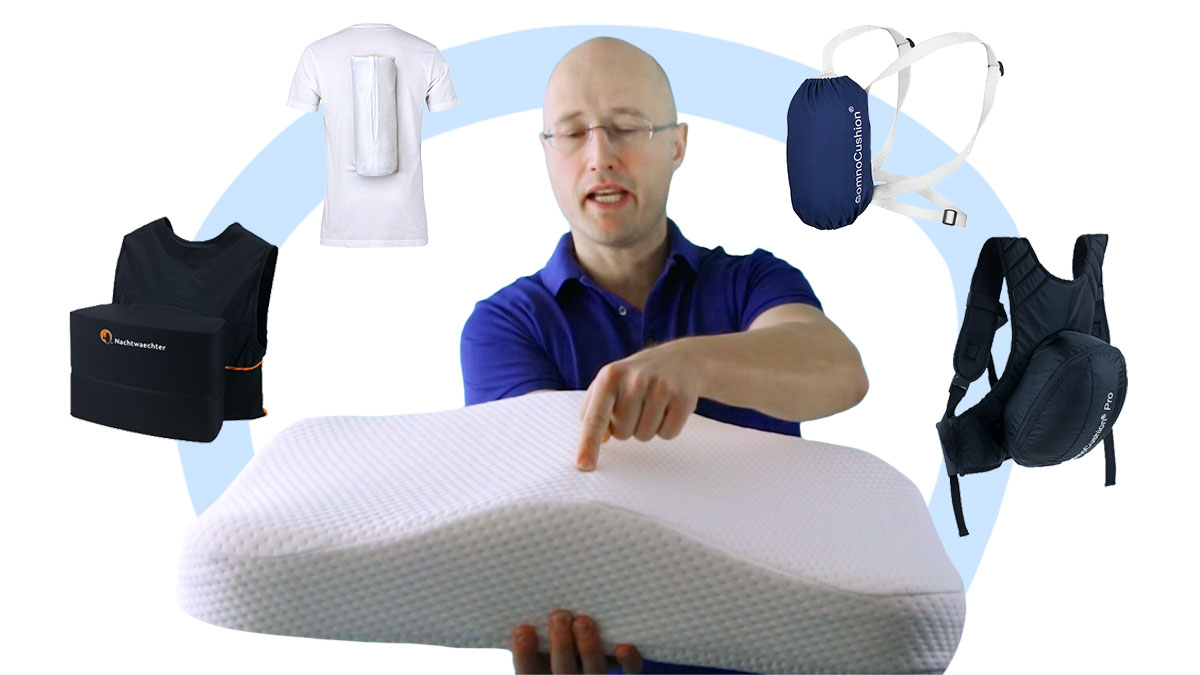
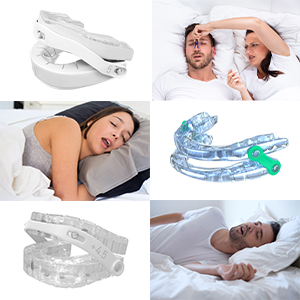
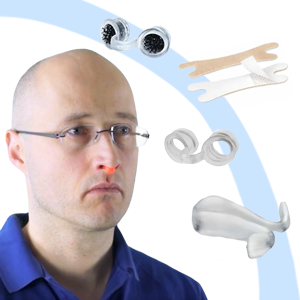
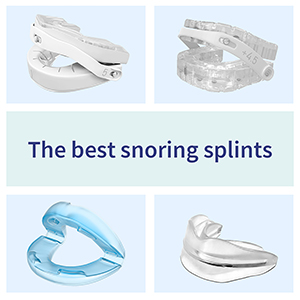


 Welcome to SomniShop
Welcome to SomniShop